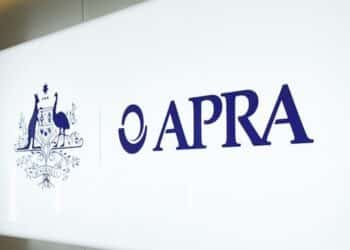The Australian Securities and Investments Commission (ASIC) has confirmed that cases where a fee consent form does not include an account number could be a reportable incident, with a “no action” deadline being placed on the matter until 5 September. However, FAAA general manager of policy, advocacy and standards Phil Anderson said changes need to be made to the rule before this deadline.
“It’s an extra step to make sure that the fee is coming out of the right account. I don’t think it’s necessary,” Anderson told ifa.
These requirements stem from the first tranche of Delivering Better Financial Outcomes (DBFO) legislation, which significantly changed the opt-in, fee disclosure and fee consent obligations when it passed Parliament in July 2024.
The reform, as the FAAA explained, “removed the Fee Disclosure Statement (FDS) obligation and sought to combine multiple consent form obligations, including the need to comply with the obligation to obtain consent to continue an Ongoing Fee Arrangement (opt-in or renewal) and the obligation to obtain consent for a fee to be deducted from a product account”. Anderson explained that, so far, this new rule has meant that licensees and advisers have had to put new ongoing fee arrangements in place with new fee consent forms, a time-consuming undertaking.
“There are many experienced people around the profession who do not fully understand the intricacies of how the different provisions in the law interact and therefore how these obligations work,” the FAAA stated in a new paper on the issue.
“This adds to the already high level of uncertainty and confusion. This all serves to highlight exactly what the ALRC said about the poor state of the Corporations Act and the need to fix it.”
In January last year, then-attorney-general Mark Dreyfus tabled the ALRC’s final report on the Corporations Act, titled Confronting Complexity: Reforming Corporations and Financial Services Legislation, which called the legislation governing Australia’s financial services industry as a tangled mess – difficult to navigate, costly to comply with, and unnecessarily difficult to enforce.
In the report, judges described the current laws as being like “porridge”, “tortuous”, treacherous”, and “labyrinthine”, while others called the legislation “broken”.
However, since it was tabled, the report has languished and is now the purview of a new Attorney-General.
This complex regulatory environment is compounded thanks to what the FAAA called a “technical flaw” in the DBFO legislation around fee consents.
“Licensees are doing a substantial number of breach reports relating to this matter, at great cost,” it said.
“Another big factor here is that despite the fact that this problem was known from around the time when the obligation commenced, there is no flexibility in this part of the Corporations Act for either the Minister or ASIC to fix it. This outcome should have been avoidable.”
Anderson also highlighted how, due to the now several year-old existence of consent forms, many in the industry did not see how this would be a problem:
“Fee consent forms have been in place since 2021 so if there was a problem about it coming out of the wrong account, then it would have been escalated to this point. There hasn’t been the talk in the marketplace. So, we don’t think there is a problem.”
For Anderson, the fix on this issue is simple: “We think that this could simply be solved by removing that reference to account number. Or alternatively, it should be possible that the account number can be separately notified without the need for the client signature to be added again.”
However, there seems to be little motivation from legislatures to make significant inroads to fix this issue.




This is ONLY ONGOING fee arrnagemenst though right? NOT fixed term agreements?
This is bureaucrats creating work to justify their jobs and ASIC levy. They could have just taken a no-action position. Instead they want to subject everyone to the time and cost of breach reporting still, if fee consents are not amended. Can anyone explain what the breach reporting regime has achieved so far? It certainly didnt stop over a billion dollar in criminal fraud on ASIC’s watch.
Cue the Benny Hill music when it comes to this government and the regulators.
This is yet another example of solving a problem that does not exist. We disclose our fees in SoA’s, OSA’s and fee forms. Our clients complain about signing off on our fees over and over again! Meanwhile TMD’s don’t prevent product failures and lawyers can charge exorbitant fees for class actions and don’t need to demonstrate informed consent (even if primary plaintiff is illiterate) or value for money for their fees! Enough is enough!
The problem is ASIC’s fault. If you look at the ASIC guide to consents, INFO 286, It is question 4 that says Account Numbers must be included. But Question 5 is “What information must be disclosed to a client”. So when people prepared the Consent Forms, they were just looking at Q5, assuming this listed everything that needed to be disclosed, and Q5 does not say Account numbers.
It is ASIC’s failure to put information in an easy to use guide that causes all this drama. ASIC are too lazy to draft a sample or a standard form, then they give misleading guidance.
“However, there seems to be little motivation from legislatures to make significant inroads to fix this issue.”
Canberra. Cesspit. ALP out.
Just an aside. In order to get an account number, we need to provide a minimum level of information to the product provider. This is generally before we have received the clients consent (unless you want an additional meeting to present the ongoing services and fees separately). Surely in doing this we are in breach of the Privacy Act. So which has overriding status, Privacy Act or Fee Disclosure requirements, or which has the smaller penalties.
At the risk of sounding paranoid, but why do so many “mistakes” consistently fall against advisers and the profession?
This most recent “error” requiring account numbers that aren’t yet available could have been easily dealt with by ASIC taking a no-action position. Similarly, the earlier drafting issues that would have meant every SoA needed trustee review just to approve fees from super – another “mistake” that disadvantaged advisers.
If you take the meta view of financial services and super specifically, there are two clear camps: the “non-profit” industry super funds who want to get back into advice via the NCA backdoor, and the for-profit sector that includes retail funds and thousands of small advice businesses.
When you view the ecosystem through this non-profit vs for-profit divide, and then examine the pattern of errors, mistakes and legislative pushes, they all seem to consistently favour the non-profit side of the fence. Industry funds seeking carve-outs from education standards while independent advisers drown in compliance. ASIC finds flexibility for large institutions but takes hard-line positions on technical breaches by advisers.
You can only rely on coincidence as an explanatory model for so long. The pattern suggests an ideological hand at play – whether conscious or unconscious – that views independent financial advice as something to be contained rather than enabled.
Or am I just being paranoid? When every “simplification” adds complexity and every “mistake” costs advisers time and money, it starts to look less like incompetence and more like design.
100% correct.
In my opinion, we have a two tiered regulator.
It’s not paranoia, the evidence regarding this is overwhelming.
…death by 1,000 cane-strokes
(soon enough, there will be even less advisers)
‘fewer’, not ‘less’
ASIC have no idea what they are even tasked with doing. The reason this is even a thing is to distract from the disgrace that is the CSLR.
You can’t make this stuff up…
The lunatics are still running the asylum so nothing changes until that is sorted!
Can’t ASIC simply make a universal form and we apply it – why is this so hard!
They don’t want to put their neck on the line…they’d rather just tell you the one you are using is wrong
My understanding is everyone has agreed to this, except the union funds. Without the union funds signing off ALP and the regulators will do nothing, despite it being the easiest way to fix the problem.